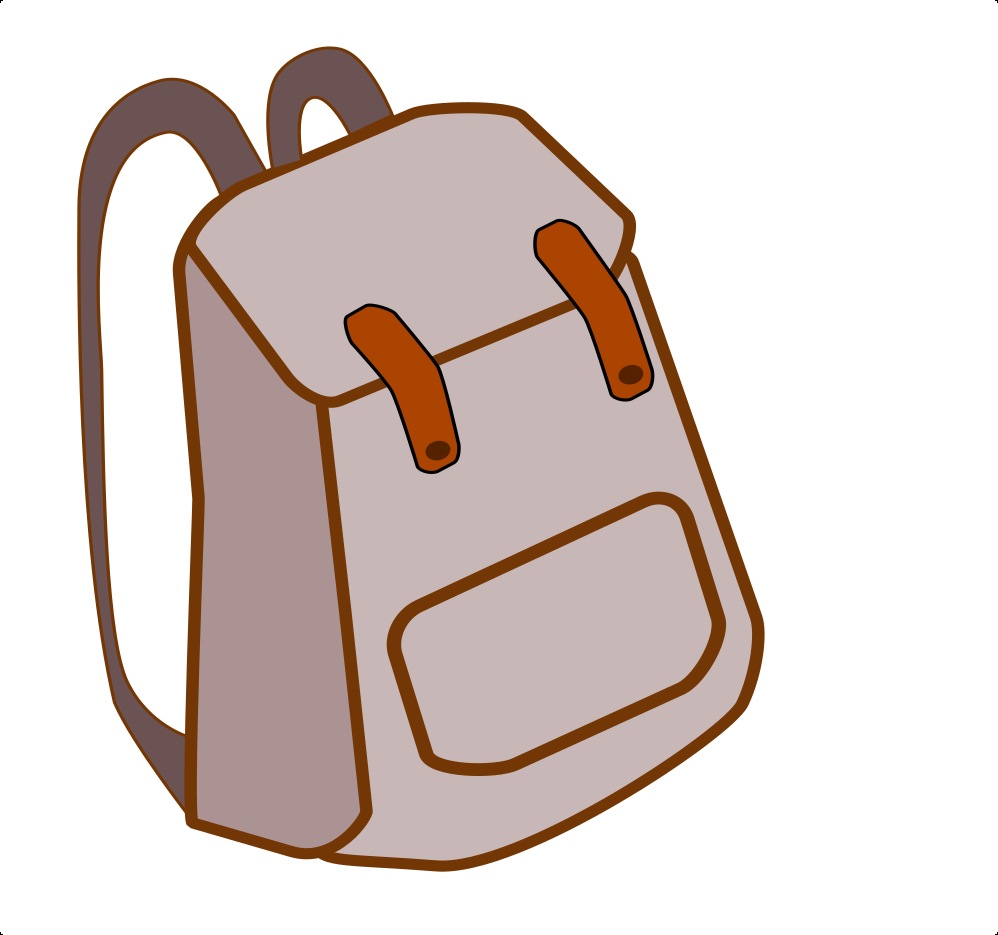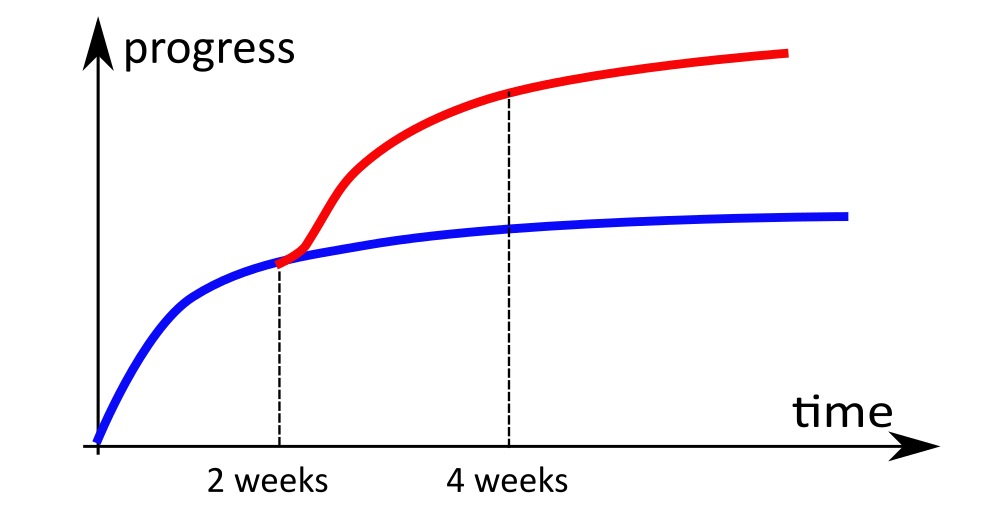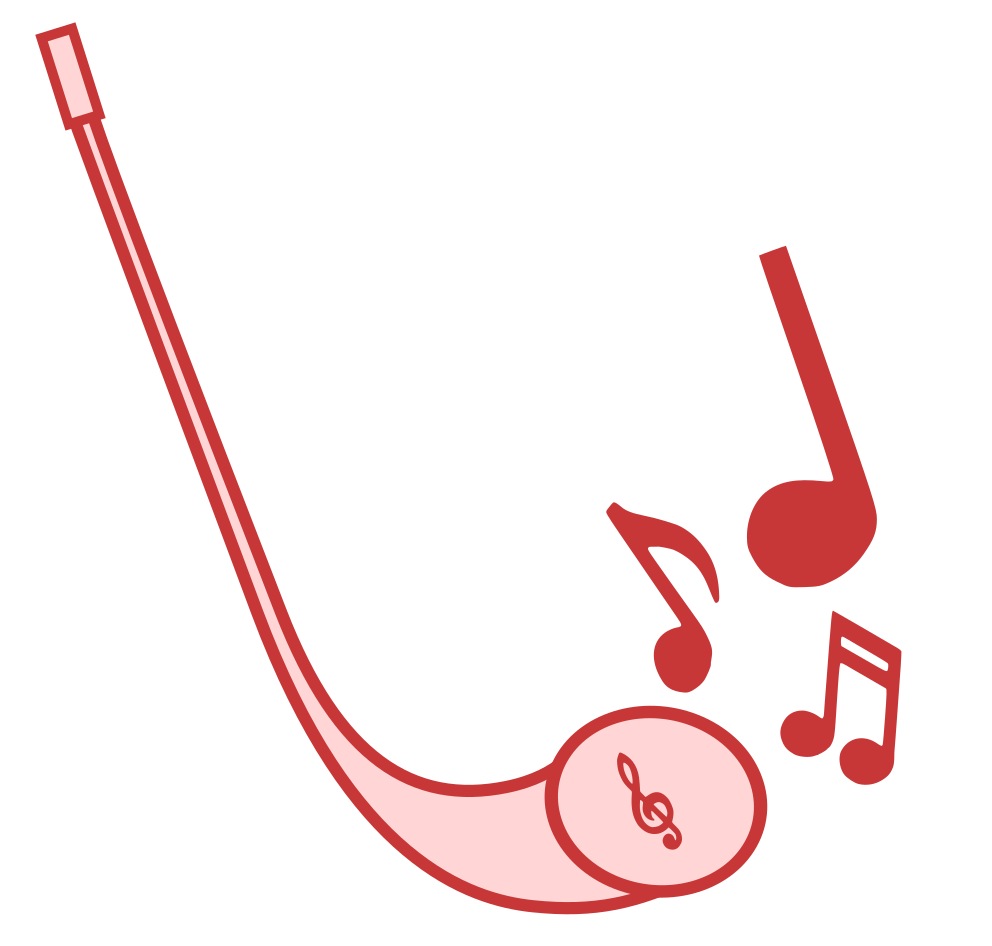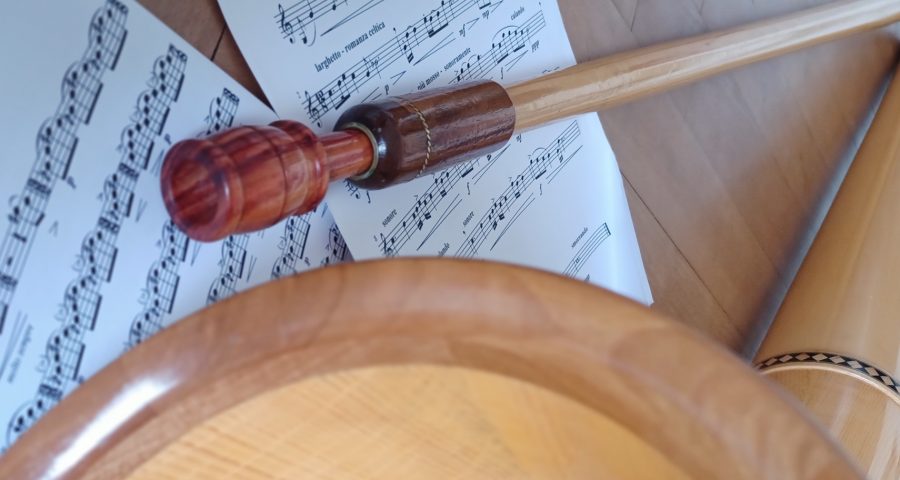Preliminary remarks on lessons 6 – 10: This third part of the course is about developing your skills on the alphorn. You will deal with topics such as expression, flexibility and range and learn how you can continuously improve with a systematic practice plan. The material of this part may accompany your for years.
In this lesson you will learn how to optimize your daily practice sessions.
 Practice Plan
Practice Plan
Perhaps you have asked yourself whether you have any talent for playing the alphorn at all? Don’t ask yourself too many questions, because scientific studies have come to a clear conclusion: the most important thing is practicing. According to expertise research you need to practice 10,000 hours in order to master a specific skill at expert level. This roughly corresponds to the preparation of athletes up to the Olympic level, the learning time in a university degree or the cumulative practice time of professional top musicians (depending on the instrument, this can also be twice or three times as much…). But don’t worry, in order to play at an amateur level you don’t have to practice two hours a day for fifteen years. Nevertheless, two principles apply here:
- Regularly / daily: Of course, you can follow the pleasure principle and only bring out your alphorn when it suits you (or on the evening before the rehearsal in the group). The downside to this hedonistic approach is that you will make modest progress at best. Regular practice is needed for your body to internalize the movements and develop the necessary muscles. Therefore, plan a practice session into your daily routine. At first it may be unusual, and you will find a thousand reasons why not to practice today. But if you really want to learn to play the alphorn, daily practice is just as much a part of your everyday life as brushing your teeth (without flossing).
- Quality before quantity: The decisive factor for success is not only the amount of practice time, but above all the effectiveness of your practice. Haphazard bumbling is minimally effective. Instead of low effectiveness you can also call it “waste of time”. Maybe you waste your time in other ways in life (in front of the TV, on a pointless job, …), but at least with the alphorn you should use it well. Every minute of your playing time is valuable (!!!) and should yield a maximum return – in the form of new skills and/or musical pleasure. The key to high effectiveness is a goal-oriented approach – in technical jargon we call this Deliberate Practice: Set yourself an appropriate goal for each practice session, focus on this goal while playing, constantly check your progress and stay fully concentrated. I will explain below how this works specifically for the different types of practice.
How long you can practice each day depends on your fitness level. At the latest when you can only make the notes by pressing or you lose your attention (the latter usually happens after 20-30 minutes), you should stop. For beginners it might be over after 10 minutes. Your muscles develop strength and endurance over the months; then you can slowly lengthen the units. Even then, take a break after 20-30 minutes. Professional brass players practice about 4 x 30 minutes a day (pianists can keep up to 8 hours a day).
When practicing, you improve three different skills: your technical skills (training), your creative skills (rehearsing) and your ability to transport emotions through music (wow, that’s a daring formulation… ; but anyway, see under “joyful play“). Your practice program should have separate blocks for these different skills. You may want to start by allocating one third of your time for each block. So if you practice, say, for half an hour a day, your plan could look like this: you start with an exercise in which you train a specific technical skill for 10 minutes (e.g. slurs, or two shorter exercises of 5 minutes each); then you rehearse a new piece for 10 minutes; finally, spend 10 minutes playing for fun (say, a 10-minute jam session with your daughter playing drums with you). Of course, this one-third-rule is not set in stone.
In the context of the effectiveness of practice, people use the term of the (steepness of the) learning curve. The graph below shows how you’re progressing over time. The blue line reflects the typical shape of such a “learning curve”: When you start with a new set of exercises, you first make quick progress (the learning curve is steep). After a certain time – typically after 2-3 weeks – your progress slows down (the curve flattens, you reach your “plateau”). Then it’s time for a new set of exercises – the red line.

After each practice session, take a moment of self-reflection: Did you achieve your goals for today? Were you challenged enough while practicing (on the steep part of the learning curve), or have you wasted your time in your comfort zone? What should you adjust next time? With this quality control, you can fine-tune your practice plan in order to keep it effective.
From now on you are in charge for your own practice plan! Practice the various aspects of the next lessons, study new pieces and also take the time to joyfully blowing the alphorn.
![]() Further information
Further information
- There are countless books and internet ressources on how to practice; you will find that most of them follow very similar principles as here. I can recommend two books: Gerald Klickstein (2009). The Musician’s Way treats musical practice in a broader context; it targets ambitious musiciancs and professionals. Jonathan Harnum (2014). The Practice of Practice is original and fun to read.
- Here a good blog post on the topic of deliberate practice.
Block 1: Training
The aim of the training block within your daily practice session is the systematic development of technical skills. For this, musicians can profit a lot from training research in sports. Key principles:
- Training is based on short sequences that are repeated about 10-20 times.
- Choose exercises that challenge you without overwhelming you. Always train on the steep part of your learning curve.
- Every time you go through a sequence, you focus on what you want to improve in that workout, i.e. orient your play to your goal.
- Practice slowly! Always try to perform each movement unit perfectly. When you play sloppy, you practice your mistakes. Keep in mind that in order to play fast, you first need to master a sequence effortless.
- Always listen actively and correct immediately your mistakes in the next turn. Pay close attention to the tone quality and intonation, air flow, transitions, lip pressure, stability of your approach, phrasing, dynamics, meter.
- Without concentration there is no quality! If you find yourself just rattling through the exercise, try to focus again or stop.
- Treat your training exercises as music, too! Trumpet player Wynton Marsalis said that you should play even the simplest exercise as if it were a musical masterpiece. So play the runs as clear phrases with expression and feeling.
- It makes sense to alternate the program from one day to the next. For example, you can focus on speed exercises one day and dynamic exercises the next. Especially after exhausting training in the high registers, you should plan a day of easy play. This allows the muscles involved to regenerate and helps you to focus again.
- Maintain your exercise program for about three weeks. Then put together a new program.
Is it all just tedious and exhausting? Yes and no! As in sports, training on the instrument is a matter of discipline – and this is not always easy for us. Sometimes you have to overcome the “inner bastard”. And yes, when you focus on the steep part of your learning curve, it’s inevitably challenging and exhausting. But there is another side: similar to the runner’s high in endurance sports, you can experience the so-called flow (some say you are “in the zone”) with alphorn training. In this state of mind time seems to stand still; you become completely immersed in the practice, and suddenly everything happens naturally and by itself. The flow is an extremely satisfying experience. And the good news is that the more you adhere to the principles of Deliberate Practice – optimal level of challenge, full concentration, goal orientation, repetition, feedback – the easier it is for you to get into the flow with your training.
![]() Here you find material for your training block
Here you find material for your training block
- My collection Workout for Alphorn and Büchel. I will use these exercises again and again in the practical parts of the following lessons .
- Jozsef Molnar’s 58 Daily Drills with a play-along CD (you know, these vintage silver disks…) for horns in F and F sharp. See also his comprehensive course Grande Méthode de Cor des Alpes.
- Finally, don’t forget to buzz (if it’s not already part of your daily warm-up)!
Block 2: Rehearsing
The goal here is to expand your musical repertoire. Ultimately, you are preparing for a performance – which may only take place in your imagination. To do this, you have to master the piece technically (putting together the skills you acquired during the training block) and give it musical shape. The principles of deliberate practice also apply when rehearsing. Here is some advice from performance science:
- Realistic goal setting and planning: Choose a piece that matches your current level. Avoid pieces that overwhelm you. You don’t want to spend months tinkering with one piece. Avoid pieces with passages outside of your pitch range. Also, avoid long pieces that will overwhelm your stamina. And, of yourse, it’s more motivating to rehearse a piece you like.
- It is NOT effective to play a new piece from start to finish over and over again. Instead, study in a systematic and goal-oriented way: Divide the piece into sections, phrases and finally small sequences (of perhaps only one bar). Then practice from small to large: Start with a sequence that you have not yet mastered. Practice it slowly at first until you master it. Repeat 10-20 times. Only then do you increase the pace. Then practice the neighboring sequences of the phrase. Put the sequences together until the whole phrase is fluent. Then you do the same with the other phrases. Finally, you assemble the whole piece. Practice the transitions between the phrases again.
- Immediate control and correction is very important. If a part doesn’t work, you should take care of it immediately. Every time you play the mistake, you burn it into your brain – and you’ll have to work twice as hard to fix it later.
- Always try to keep the overall picture in mind: How should the piece sound? And what role does the phrase you are working on play? Most classical musicians study a piece intensively before playing it for the first time on the instrument: Listening to recordings, singing rhythm and melody (possibly searching for the notes with a piano), determining the tempo and mood of the piece. If you do this homework beforehand, you will progress faster afterwards. Often you develop your interpretation of the piece as you go. Then you can try different ways of putting the phrases together. Be goal-oriented here, too. How should the piece sound and how do you achieve this goal? After each playthrough, ask yourself whether the piece actually sounded the way you wanted it to?
- It can be helpful to annotate each phrase on the sheet music with short keywords – these can be instructions (“gently”), images (“like a stubborn cow”), clues (“major”/”minor”), or just symbols (“!”). Internalize these keywords while rehearsing (e.g. think “I’ll play this phrase very gently”); in this way you create a stable connection between phrase, mental imagination and fine motor implementation. Keywords help you to memorize and then serve as a guide for interpretation and a safety net in case of dropouts during the presentation.
![]() Further information
Further information
- Here, Natalie Douglas Grana shows you how to use singing in your alphorn practice
- Annotations to your sheet music are sometimes labeled “performance cues”. See here for empirical evidence how they work.
Block 3: Joyfull Play
It is a purely semantic question whether one counts the joyful play as part of practicing or already distinguishes it as “making music”. It is clear that you hardly started playing the alphorn just to train and learn new pieces.
You are pursuing several goals in this block: Firstly, there is the positive, fulfilling, sensual experience of making music (pleasure and joy). Music is fun, and fun increases the motivation for training. At the same time, you learn a lot while making music. You discover your technical limits – possibly in unexpected places. Above all, you will find out what the music triggers in you. Play with an open ear and an open heart. Here are a few options:
- Repertoire. Play pieces you learned in the past. You can also vary your interpretation in an exaggerated fashion – play the piece absurdly slow or fast, with extreme accents, impossible dynamics, etc. (this method of differential learning originally comes from sports, but is found to be also effective in music).
- Sight reading. Simply playing through a whole collection of new tracks is fun. You train your sight reading skills and get to know a lot of new material. On the alphorn, sight reading is also ear training.
- Play outside. Playing the alphorn in nature maximizes pleasure. Old pieces sound new in a different acoustic environment. Perhaps the echo plays with you, or you perceive the silence between the notes. I also like to go on extensive hikes in the mountains – fresh mountain air, sporting exertion and summit schnapps go very well with the alphorn.
- Play with others. Perhaps you will join an alphorn group and learn about the challenges of playing together. As a bonus (?) you get the social aspects. If you can’t find any players, you can practice with play-alongs (see below).
- Improvisation. Because you can only play tones of the natural scale on the alphorn, you don’t need advanced training in music theory to improvise. You can “just get started”! More on this in Lesson 7.
- Recordings. If you record yourself playing the alphorn, the result will surprise you. Whether you simply use your mobile phone or a special recorder (I can recommend the Zoom Q2n-4K) doesn’t matter for the time being.
 Training
Training
Objective: You will learn how to create an effective training session using a simple exercise.
As an example, I will show you how you can design a short training session. Take exercise #1.3 of my collection Workout for Alphorn and Büchel. The first thing you have to do is adapt the exercise to your personal pitch range. If you can play from G3 to E5, the exercise is reduced to::

First try to play through the whole exercise once or twice to get an overall impression. You realize where you are most insecure; take this passage, e.g. the 4th triplet, as a starting point:

Choose either the ascending part (left) or the descending part (right); always include the first note of the next sequence. You can also combine the two parts (middle). Play slowly through the short sequence; find the pace at which you still master it. Then take the metronome and practice the it exactly in meter at this tempo 10-20 times; if this works constistently, you can increase the speed in small increments. Now you take the preceding or following triplet and train it analogously again. Then you put both together:

Train these longer sequences consistently with the metronome. You continue like this until you master the whole exercise. You may then increase the tempo again. But spend a maximum of 5-10 minutes a day on a specific exercise. For longer training blocks you take several exercises.
Important: Always keep the goal in mind during your training! You can pursue different goals with the same exercise. For example, you could pay attention to clean phrasing (clearly emphasize each triplet) or clean sounds (pay attention to uncontrolled background noise). Concentrate on getting closer to your training goal with each turn.
Now that you know how to design a training block, choose your own exercise and train it daily for 2-3 weeks. In the following lessons I will address different topics; these result in training goals, which you can then pursue with appropriate exercises. Design your own training plan along the principles discussed above. I recommend that you place the training block right at the beginning of your daily exercise time.
 Play along!
Play along!
Objective: You discover the possibilities of playalongs.
Play-alongs are pieces specially recorded for music students. For example, the melody part could be recorded, and you could play the appropriate backing track. This gives you the joy of playing together while being all alone. It’s fun and you learn to listen as you play. Another advantage for beginners: you can concentrate on the easier 2nd voice for the time being, and thus have a more interesting repertoire to choose from. Here are a few tips on how to get play-alongs:
- Play-along packages: You can buy combos of sheet music with accompanying sound material. Such collections are normally aimed at a specific level of expertise and are therefore particularly suitable for beginners. Hans-Jürg Sommer sells six play-along books for alphorn in F sharp and F on his website. The Edition Marc Reift also has various play-along books on offer. Christian Gnos puts his alphorn sheet music online with audio files to play along with (unfortunately only in F sharp).
- Recordings: Alternatively, you can play along with published recordings. Youtube offers a plethora of these (e.g. Alphornmonumental by Patrick Kissling Cotti). The audio track of such videos can easily be downloaded with a converter (I use the free converter by MediaHuman). You can then also change the tuning (e.g. from F sharp to F by reducing the pitch by a semitone) and adjust the speed of the recording to your own level (e.g. with the free online pitch shifter from vocalremover or directly on your smart phone with Anytune).
- MuseScore is an open-source / freeware notation software with a built-in (alphorn) synthesizer that plays any score – at any speed and tuning. In addition to the small collection of alphorn sheet music on the platform, you can also import your own sheet music. Particularly interesting for you: Michel Fellmann shares here all his pieces with the corresponding MuseScore Files – giving you a collection of more than 700 play-alongs. A MuseScore subscription also allows you to import sheet music in PDF format. This way, a pdf document can be turned into a fully-fledged play-along package with just a few clicks.
As a freebie and example, here’s a play-along I produced with MuseScore. You can find the sheet music of “Arosa” on the website of Robert Oesch. Study the 2nd voice, then play it together with the sound files. Here are the audio files @ 70 bpm (i.e. with a tempo of 70 beats per minute):
